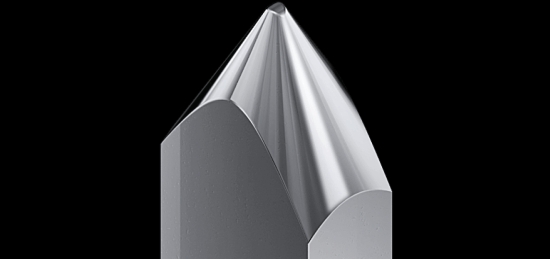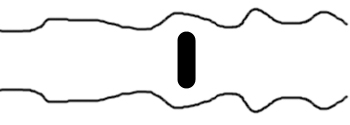It might be the stylus design!!
Line Contact / Linear Contact / Special Line Contact / Fine Line

The cross-section of a Line Contact stylus can be regarded as an Ellipse taken to the extreme and with straight vertical edges (rather than round) for deeper groove contact, as illustrated below.

The Line Contact stylus shape can be considered a later variation of the Stereohedron stylus (with its four slivers shaved off, it is sort of a double elliptical) as patented originally by Pickering in 1973.
Patented in 1978 in Japan by inventor Junshiro Ogura, the Line Contact stylus is shaped such that it allows maximum vertical contact with the groove walls whilst having a small front-to-back contact. This kind of stylus is almost always fitted with a nude diamond. Compared to Conical Styluses (that due to their rounded shape only touch the groove walls in one vertical spot, thus more easily wearing them out on that depth), Line Contact styluses can make slightly worn records (when worn as a result of the use with conical or elliptical styluses) sound almost pristine. This is because the larger vertical area can now be modulated by previously untouched areas of the groove walls.
The variations such as Linear Contact, Special Line Contact, and Fine Line all represent further refinements of the principle, usually adjusting the shape of the shank and/or the width of the contact area. The variations with the narrowest contact area such as Ortofon’s Fine Line, Audio Technica’s Line Contact, and the more generic Special Line Contact achieve the most accurate results with the best high-frequency response and lowest distortion. All the variations have in common that the stylus wears more evenly which results in a longer stylus life.
In general, the more precise the stylus shape, obviously, the better it is at picking up high frequencies but also the better it is at picking up small defects in the pressing or very brief noise spikes. Compared to the simple Stylus shapes, the Line Contact and more advanced designs require records that are cleaner and in better condition to be played mainly noise-free. But in my book a little playback noise here and there certainly does not stand in the way of my musical enjoyment, and even if so, usually, it’s nothing a record cleaning machine can’t fix.

